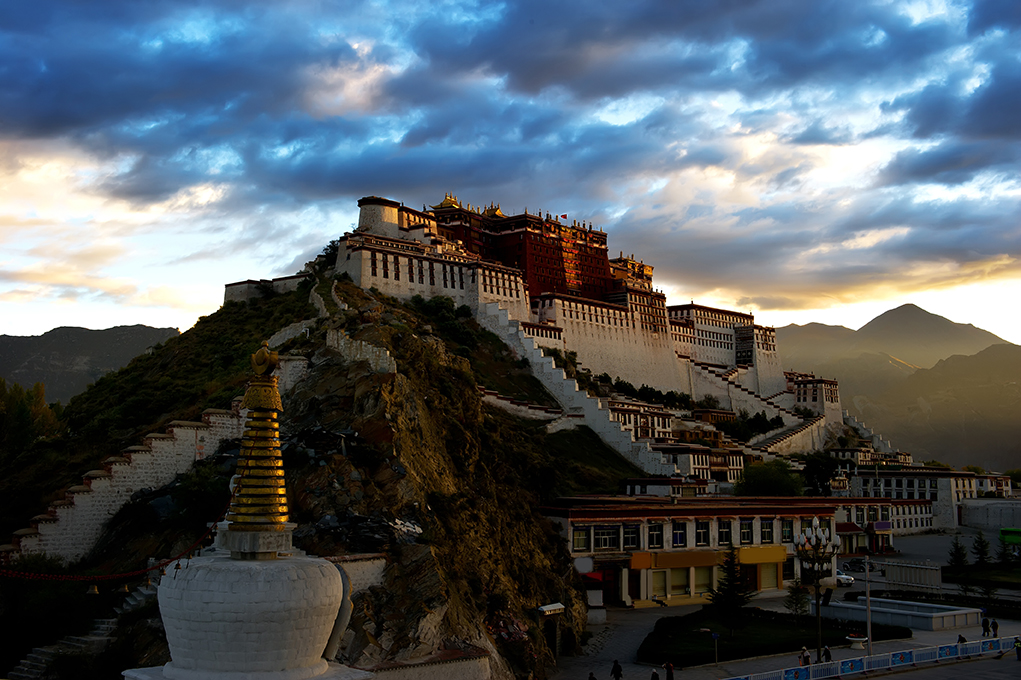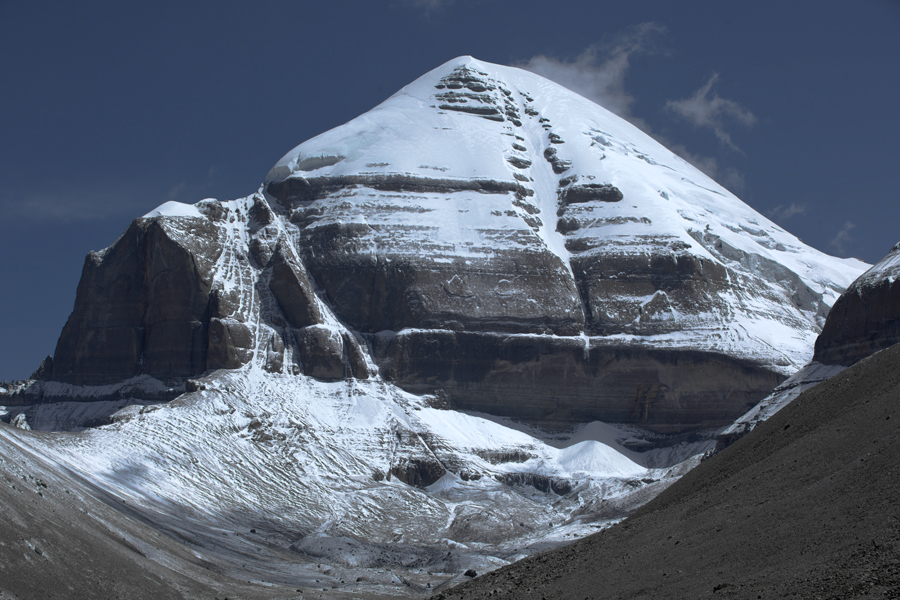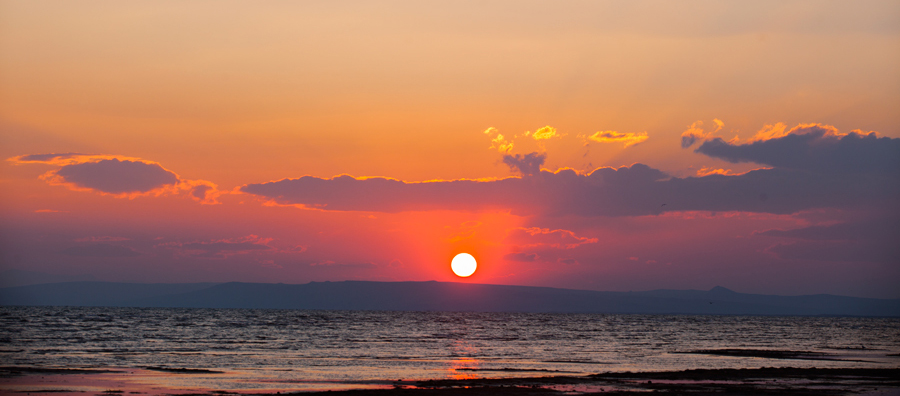
MT. KAILASH & LAKE MANSAROVAR Via LHASA and Mt. EVEREST BASE CAMP
- Home /
- Tibet /
- Mt. Kailash and Lake Mansarovar /
- MT. KAILASH & LAKE MANSAROVAR Via LHASA and Mt. EVEREST BASE CAMP
ABOUT THE TRIP
Pilgrimage to Mount Kailash & Lake Manasarovar, are considered to be the most sacred by Hindus, Buddhists, Jains & Bonpos. Mt. Kailash is known as Khang Rinpoche “Jewel of Snow” by Tibetans, they consider it as the “Naval of the world”. For Buddhists, Mt. Kailash is the “Abode of Arhats” (those who have attained paradise). Bonpos consider, Shanrab their founder, descended from the heavens on this mountain. The Hindus consider Mt. Kailash as the “Center of the universe” & the abode of Lord Shiva & Parvati. South of Mt. Kailash, at the base of Mt. Gurla Mandhata, there are the two lakes, Lake Manasarovar & Rakshas Tal. Rakshas Tal, the smaller lake, is considered to be inauspicious & Manasarovar is considered to be most sacred & worthy of salvation. Hindus believe that Gods descend down from heaven to take a bath in this holy lake. Buddhists believe that Queen Maya took a bath in this holy lake before giving birth to Lord Buddha. The glaciers of Mt. Kailash & Mt. Gurla Mandhata feed both these lake. It is also belived that the three major rivers Brahmaputra, Sutlej & Indus are fed from Lake Manasarovar. Lake Manasarovar (4,727 m / 15510) is the highest fresh – water body in the world. Since ages many hermits & pilgrims have been undertaking journeys to this sacred & the holiest of all Mt. Kailash & Lake Manasarovar, because of the religious & mythological importance. Mt. Kailash & Lake Manasarovar is situated in southern Tibet aptly known as the “Roof of the world”. Our Journey involves flying to Gongar Airport in Lhasa (Tibet) & traveling by Coach or Land Cruiser from Lhasa to Darchen, a small Tibetan town, at the base of Mt. Kailash travelling via Mt. Everest Base Camp (North) The altitudes on which we travel are minimum 4,500m / 14,760 ft. for most of the days. The Circumambulation (Parikarma / Kora) around the Mt. Kailash is a 3 – days trek, taking us over a (6-8 hrs. minimum per day.
Itinerary In Detail
-
1: Arrive in Kathmandu (1,400 m / 4,592 ft.)
Arrive at Kathmandu. Upon arrival, meet & greet at the airport and transfer to hotel for room check in. Rest of the day is free for rest.
Dinner and overnight at hotel. -
2: Sightseeing tour of Kathmandu, Swyambhunath and Patan City.
After breakfast proceeds for a sightseeing tour Swayambhunath Stupa situated atop a hill from where you could get a bird’s eye view of Kathmandu Valley. The Swayambhunath Stupa is also known as the “Monkey Temple”!! and listed in a world heritage site. Later proceed for sightseeing tour of Kathmandu city. It includes visit to the Hanuman Dhoka (Kathmandu Durbar Square) – an ancient durbar (palace) with its numerous old palaces, temples and pagodas, the Temple of Living Goddess “Kumari”, and the Kasthamandap Temple, which is believed to be constructed from the wood of a single tree from which Kathmandu derives its name. Lunch on your own in Kathmandu Durbar Square. After lunch proceed for a sightseeing tour of the ancient Patan City, this ancient city of Patan also known as Lalitpur or the city of fine arts is about five Kilometers southeast of Kathmandu. The city is full of Hindu temples and Buddhist monuments.
Dinner and overnight at hotel. -
3: Visit Pashupatinath, Bouddhanath and Bhaktapur City.
After breakfast proceed for a tour of Bouddhanath Stupa – an ancient colossal stupa and the center of Tibetan Buddhism in the world which is also listed in UNISCO world heritage site.
After the tour of Bouddhanath, proceed for a tour of Pashupatinath Temple – the Temple of Lord Shiva situated on the bank of the holy Bagmati River. The temple is listed on a UNISCO World Heritage Site. Later drive to Bhaktapur City, literally the “City of Devotees”, is renowned for its elegant art, fabulous culture, colorful festivals, traditional dances and the typical Newari lifestyle. Here explore the Royal Palace, the Golden Gate, the entrance to the Palace of 55 Windows, known as the most significant piece of art in Nepal. Then visit the highest temple in the entire Kathmandu Valley- the Nyatapola Temple. This is also listed on a UNISCO world heritage site. After sightseeing tour transfer back to hotel.
Overnight at hotel.
Note: On day 02 & day 03, we will process your Chinese Visa at Chinese Embassy in Kathmandu. -
4: Obtain Chinese Visa and fly to Lhasa (3,660m / 12,004ft)
Morning transfer to the airport for the hour-long flight to Lhasa. The Spectacular flight on Air China which. Crosses the main Himalayan range and the mountain views are magnificent. After arriving at Gonggar Airport in Tibet, It’s an hour drive to Lhasa. It’s advisable to rest and take an easy for the remainder of the day, due to Lhasa’s altitude.
Overnight at hotel. -
5: Sightseeing tour of Potala Palace, Jokhang Temple and Barkhor Bazaar.
Am: Potala Palace. This morning we will visit the Potala Palace, which dominates the city of Lhasa. A spectacular building, it contains the private quarters of the Dalai Lama as well as numerous grand staterooms and many important chapels. There has been a palace on this site since the 5th or 6th century, but the present palace was constructed in the 17th century. A visit to the Drepung Monastery this afternoon will complete a truly awe- inspiring day. Founded in the 14th century, this monastery was once the largest in the world with a population of around 10,000 monks. These days that figure is down to several hundred, but there is still much here of interest as it was left relatively unscathed during the Cultural Revolution. Jokhang Temple: Situated in the heart of old Lhasa houses Tibet’s most precious religious relic, a golden Sakyamuni Buddha that was brought as a gift by the Chinese princess Wen Cheng on her wedding to the Tibetan King, Songtsen Gampo. Devout pilgrims prostrate themselves at the entrance of the temple and make the inner holy circuit to offer yak butter to the gods and pay homage to the golden statue of Sakyamuni. Surrounding the Jokhang Temple is the busy bustling Barkhor Bazaar. A marketplace, which is the religious and social focus of Lhasa. This is the Spiritual Center of Tibet and is also the heart of Lhasa. Barkhor Bazaar: Barkhor, a circular street at the center of Old Lhasa, is the oldest street in a very traditional city in Tibet. It is a place where Tibetan culture, economy, religion and arts assemble and a place to which a visit must be paid. It has been said that in the seventh century Songtsen Gampo, the first Tibetan King (617 – 650) who unified Tibet, married Chinese Princess Wencheng and Nepal princess Tritsun. Later Princess Tritsun built Jokhang Temple to accommodate the twelve-year-old Jowo Sakyamuni, brought to Tibet by Princess Wencheng. Barkhor is the road, where pilgrims tramped out around Jokhang Temple through centuries. Buddhist pilgrims walk or progress by body-lengths along the street clockwise every day into deep night. Most of Lhasa's floating population is comprised of these pilgrims. The pilgrims walk outside four columns on which colorful scripture streamers are hung, a custom, which began in the Tubo period (633-877) as a way to show respect.
Overnight at hotel. -
6: Drive to Shigatse via Yamdrok – Tso & Gyantse (3,840 m / 12,956 ft) – 351 km.
Today we start our overland journey towards Kathmandu. Traveling by jeep along the Friendship Highway we cross the Khamba La [4794m] from which there is stunning views across the waters of Yamdrok-tso Lake to the snowy summit of Nazin Kang Sa [7252m]. We continue westwards over another high pass the Karo La [5045m] where we are treated to the spectacular sight of a huge glacier tumbling down to within a few hundred meters of the road. After passing through beautiful valleys and colorful Tibetan villages we arrive in the town of Gyantse. In Gyantse visit 14 th century Gyantse Dzong and Gyantse Kumbum or fort. It is worth the stiff 20 minutes climb to its upper limits, more for the amazing views of Gyantse, the monastery, Nyang Chu valley. Some of the Dzong’s buildings can be entered and explored, sometimes to upper floors by means of rickety wooden ladders. The Kumbum is a large gold-domed stupa and its many small chapels house an impressive array of Tibetan Buddhist murals. After excursion, we continue on to Shigatse, which is second largest city in Tibet. Upon arrival check in at hotel for refreshment.
Dinner and overnight at hotel. -
7: Visit Tashilhunpo Monastery & drive to New Tingri (4,300m / 14,107 ft.) - 244 km
Am: After breakfast visit Tashilhunpo Monastey. This monastery is one of the largest functioning Monastery in Tibet and there is much to explore within its high surrounding wall. Later visit local market and have lunch in a nice restaurant. After lunch continue along the Friendship Highway, marveling once more at the barren yet spectacular landscape of Tibet. Beyond the small town of Lhatse we cross Gyamtso La (5,220m) and descend to the plains, passing monasteries and camps of nomadic herder to New Tingri.
Dinner and overnight at guesthouse. -
8: Drive to Everest Base Camp (5,200 m / 17056 ft.) and continue to Saga (4,500 m / 14,760 ft)– 8/9 hrs.
Today is the great day! we drive to Mt. Everest Base Camp. We begin our journey very early to catch up the Sunrise view from Pang la pass, from where you can enjoy the spectacular panoramic sunrise view over some of the 8,000 m Mountain including Mt. Everest, Lhotse, Makalu, Cho Oyu, Shisapangma etc. After sunrise start descend down to valley and continue drive to Rongbuk Monastery from where we can witness the impressive view of world’s highest Mount Everest. We can further drive up to the view point of Everest Base Camp. After spending sometime continue
drive back through off road to Old Tingri for lunch, where you can re-join friendship highway. After lunch continue to Saga passing through very beautiful Pigu Tso, then follow a narrow gorge before climbing to a pass and dropping steeply down to a Bramaputra bridge. After crossing the Bramaputra River, it is another 10 minutes to town Saga. We arrive in Saga late for dinner.
Dinner and overnight at hotel. -
9: Drive to Darchen (4,590 m / 15,055 ft.) via Lake Mansarovar– 520 kms / 7~8 hrs.
After early breakfast drive to Prayang for lunch. After lunch continue drive over via Mayum La (5,151m/16890 ft) to Lake Mansarova . According to Hindus mythology Lake Manasarovar was created by Brahma as a reflection of the depth of his soul-manas and represents the female energy of Yoni of the Universe, while Mt. Kailash symbolizes the male energy of the Lingum. Lake Mansarovar is the highest body of fresh water in the world. Holy also to Buddhists, it was once surrounded by 8 monasteries. Hindu’s believe that once taking a Holy Dip at Mansarovar, they can clear all the sin committed in their life. After excursion, drive to Darchen ,which is only 40 km from Mansarovar.
Dinner and overnight at guesthouse in Darchen. -
10: Drive to Tarboche & Start Kora of Mt. Kailash to Drira Phuk (4,890m / 14,950ft) – 6 hrs.
After breakfast drive Tarboche, where you can see the huge prayer flag erected during Sakadawa festival. You can also witness big crowd of Indian, Nepali and Tibetan pilgrimage getting ready for Kora. After a short preparation start trek to Drira Phuk. The normal pilgrims' route stays on the east bank of the Lha Chu. But for better views of Kailash and generally better campsites, we cross the west bank trail across a scree slope to arrive at a good camping ground at Damding Donkhang (4,890 m / 16040 ft), a grassy spot that offers good views of the West face of Mt. Kailash. It is also known as the Valley of yaks as one can see hundreds of yaks grazing on the meadow. We continue on a rocky path walking along the Belung Chu and Dunglung Chu streams as the North face of Kailash comes in view. On the opposite side of the Lha Chu you can see several groups of nomad tending herd of goats and yaks. As one reaches the Gompa and a frugal guesthouse at Drira Phuk, we are rewarded with a fine view of the North face of Mt. Kailash. The three lower hills in front of Mt. Kailash from this vantage point are the Manjushree, Avalokitesvara and Vajrapani representing wisdom, kindness and power.
Dinner and overnight guesthouse. -
11: Trek to Zhutulphuk (4,790 m / 15,711 ft.) via Dolma la (5,630 m) – 8/9 hours.
Start trek from Drira Phuk and immediately cross the Lha Chu on a wooden bridge. If one continues to trek up the Lha Chu, they would eventually reach the true source of the Hindus. The Kora route makes a serious climb on to a moraine leading to the Dolma La pass (5,430 m) and eventually meeting the trail from the East bank. After crossing the stream of the Khado – sanglam, we arrive at another Chaksal Gang, the third prostration point and from where we get the last view of the east face of Mt. Kailash during the circumambulation. After about 3 hrs we arrive at the Zutul-puk Gompa (4790m / 15710 ft) where there is a cave in which the saint Milarepa is said to have meditated. It is said that he adjusted the height of this cave to make it more comfortable. His footprint still remains on the roof.
Dinner and overnight at guesthouse. -
12: End Parikarma of Mt. Kailash (3 hrs.) & Drive to Saga – 7 & 8 hrs.
Start early along the Jhong Chu River to a bridge, cross it before descending to 4,610 m, the last prostration point (Chaksal Gang) from where we get good views of Manasarovar lake but no views of Mt. Kailash. After completing Parikarma drive to Darchen for Lunch. After lunch start return Journey back to Saga.
Dinner and overnight guesthouse Saga. -
13: Drive to Kerung (220 Km) and exit to Nepal.
After breakfast, start your return Journey towards Nepal / China Border. The drive is very scenic further we descend down to lower elevation there is a dramatic change on the vegetation as appear greener and greener. Kerung is a beautiful border town at an altitude of 2,700 m. We stop here for a lunch. After lunch drive to Chinese Immigration. After completing Chinese Immigration formalities exit to Nepal and walk or transfer to nearby guesthouse. Rest of the day is free for rest.
Dinner and overnight at guesthouse. -
14: Drive to Kathmandu (140 Km) – 5/6 hours
After breakfast start drive to Kathmandu. The road condition as of now is not so good. We will have 4WD Jeeps and may takes around 5/6 hours or more. Upon arrival in Kathmandu check in at hotel.
Dinner and overnight at hotel. -
15: Contingency day in Kathmandu.
Spend a relaxing day in Kathmandu; you can stroll around colorful Thamel Bazaar for last minute shopping. It is important to have an extra day in Kathmandu as contingency in case of delay due of road blockage or any unforeseen reason.
Eve: Farewell dinner at nice restaurant.
Overnight at hotel. -
16: Final departure form Kathmandu.
Free until final departure transfer to Kathmandu’s International Airport.
12 Days From
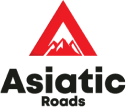
Any Question?
Feel free to call our travel experts.
+977 9851189018, +977 9801089018
info@asiaticroads.com
Whats Include and Exclude
Services Inclued
Costs include:
1. All accommodation in Kathmandu (as above) on twin / double room sharing basis, inclusive of all meals
(Vegetarian meals)
2. Sightseeing tour as per Itinerary in Kathmandu inclusive of applicable entrance fees.
3. All accommodation in Tibet (as above) on twin / double room sharing basis, inclusive of breakfast and taxes.
4. Welcome and farewell dinner in Kathmandu.
5. All necessary special travel documents and special permits from Tibet.
6. Drinking mineral water during on the drive.
7. All transfers, sightseeing and drive in Tibet in a private van.
Services not Inclued
1. Nepal entry and re-entry visa fee (Not applicable for Indian Citizens)
2. airfare for sector Katmandu / Lhasa (Quoted separately)
3. Any expenses of Personal nature.
4. Chinese Visa fees (quoted separately)
5. Meals other than daily breakfast and welcome and farewell dinners.
6. Photography fees if application.
7. Any expenses incurred during emergency evacuation.
8. Any items not mentioned in “the above cost includes” section.
9. Personal Insurance policy must be bought from a reputed and reliable firm covering thefts, loss of valuables,
tour or flight cancellations due to weather conditions, political reasons or reasons beyond our control, illness,
accidents, hospitalization, etc., as well as emergency helicopter evacuation, etc.
Accomodations
Accomodation (Hotels envisaged or similar)
| Kathmandu | Hotel Tibet or Manaslu | 5 | BB |
|---|---|---|---|
| Lhasa | Hotel Dekhang | 2 | BB |
| Shigatse | Guesthouse | 1 | BB |
| New Tingri | Hotel Qomolangma | 1 | BB |
| Saga | Norbhulingka Guesthouse | 2 | BB |
| Darchen | Hotel Himalaya | 1 | BB |
| Drira Phuk & Zutul Phuk | Camp / guesthouse | 2 | BB |
| Drira Phuk & Zutul Phuk | Guesthouse | 1 | BB |
12 Days From

Any Question?
Feel free to call our travel experts.
+977 9851189018, +977 9801089018
info@asiaticroads.com
12 Days From

Any Question?
Feel free to call our travel experts.
+977 9851189018, +977 9801089018
info@asiaticroads.com
Reviews
In my 2 week stay, John was very professional and took me around to experience all that Kathmandu and surrounding areas has to offer. Sites were seen and many locals were met through John’s network.

Steven Stone
TravellerIn my 2 week stay, John was very professional and took me around to experience all that Kathmandu and surrounding areas has to offer. Sites were seen and many locals were met through John’s network.

Steven Stone
Traveller12 Days From

